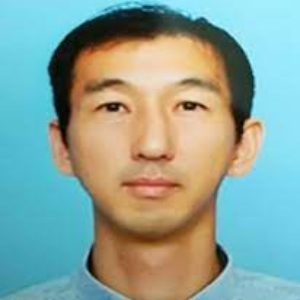Title : Numerical evaluation of exhalation through the nose treatment for eosinophilic chronic Rhinosinusitis using computational fluid dynamics
Abstract:
Recently patients who suffer Eosinophilic Chronic Rhinosinusitis with asthma (ECRS) have significantly increased in Asia. This disease has been recognized as an incurable disease, and its symptoms are multiple nasal polyps, excessive rhinorrhea, rhinostenosis and asthma. The difficulties to cure this disease arise from that any conventional medications are not effective and ECRS is not only nasal disease but also whole airway disease. Nose operations have been conducted for ECRS patients to improve patient’s QOL, however, almost of the patients suffer the recurrences. The authors have developed new medication technique, aerosol medicine exhalation through the nose (ETN). In this treatment, the patient inhales aerosol of inhaled corticosteroid (ICS) medicine from mouth using portable inhaler. Then some of the aerosol particles still float and remain in upper airway. When the patient exhales inhaled air through the nose, the aerosol particles are effectively transported on the walls of middle meatus and olfactory fissure. Although the effectiveness of this treatment has been confirmed in clinical practice study, the magnitude of the effectiveness strongly depends on each patient. This study performed Computational Fluid Dynamics (CFD) analysis for ETN treatment. Two of the advantages in this study are that this study focuses on computer-aimed medication for clinical application and the CFD analysis elucidates the aerosol transportation during not only inhalation but also exhalation periods.
Method: Several patients, who had ECRS with asthma and endoscopic sinus surgery, ware selected in this study. 3D anatomically accurate patient-specific models were reconstructed from the data obtained using multidetector CT scanner. This study performed conjugation of Euler-Lagrange particle transport model for aerosol transport and a Large Eddy Simulation model for complex intranasal turbulent flow. This analysis is able to take transient fluid flow and transport of aerosol particles into account, and consequently, providing highly accurate predictions of aerosol deposition on upper airway wall.
Results and Discussion: ETN formed impinging flow toward upper wall of nasopharynx, subsequently complex swirl and circulation flow in the nasopharynx region during exhalation period. In addition, main flow of ETN passed upper region of nasal cavity. Such the tendencies affected on aerosol medicine transport characteristics; a part of medicinal particles moved into ethmoidal sinuses. Total amount of the aerosol deposition during ETN depends on flow rate of inhalation and exhalation. This tendency is more remarkable on the upper wall of nasopharynx. On the other hand, deposition rate of aerosol on the ethmoidal sinuses did not appear strong correlation with flow rate of exhalation. These results imply that there is an optimum inhalation and exhalation condition in each the patient, and CFD analysis is able to elucidate such the condition easily.
Audience take away:
• This paper describes newly developed treatment method, we call “Exhalation through the nose (ETN for shorten)” method, for Eosinophilic Chronic Rhinosinusitis (ECRS) which is one of intractable nasal diseases.
• In ETN method, steroid aerosol is transported inside nasal cavity from nasopharynx to nostril, and then the aerosol is able to reach ethmoid sinuses effectively.
• This paper elucidates transport characteristics of the aerosol during the exhalation as well as relationship between exhalation conditions (flow rate and duration time) and aerosol deposition distribution.



